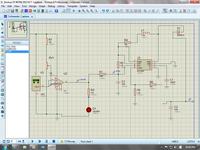Englewood
Full Member level 3

- Joined
- Nov 2, 2014
- Messages
- 178
- Helped
- 0
- Reputation
- 0
- Reaction score
- 0
- Trophy points
- 16
- Activity points
- 1,294
Hello,
I want to design a circuit so that when a temperature of say 100C is reached i get a 24v output to triger a safety cut off.
Is this possible using a LM35?
I want to design a circuit so that when a temperature of say 100C is reached i get a 24v output to triger a safety cut off.
Is this possible using a LM35?




